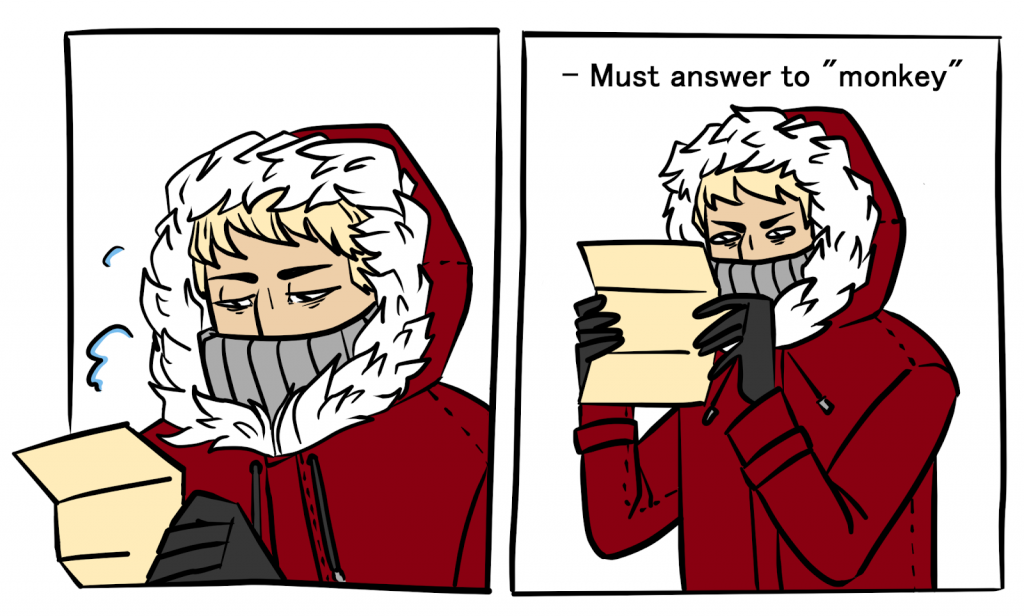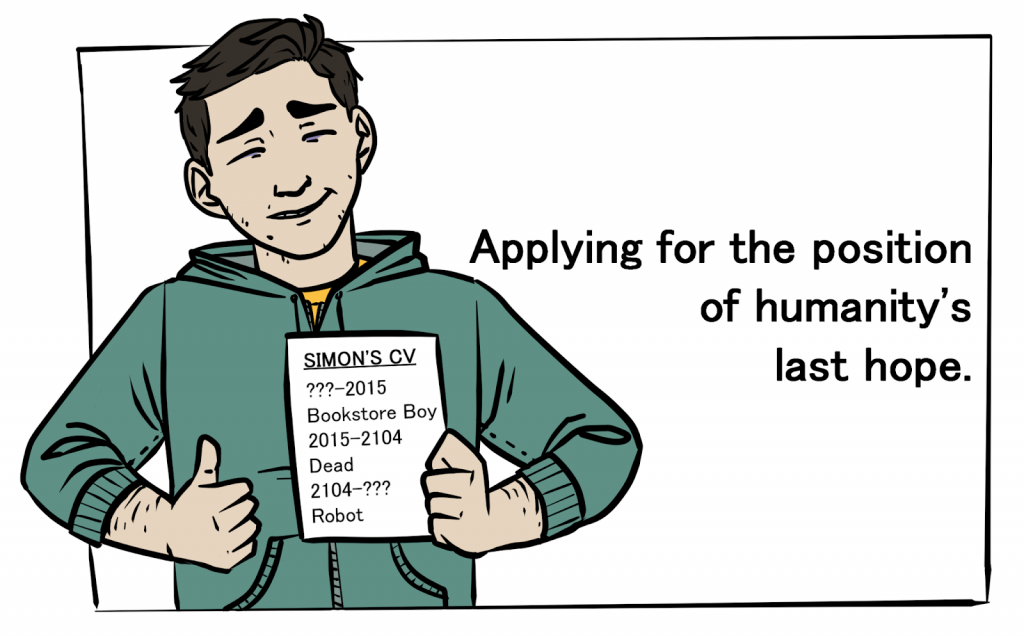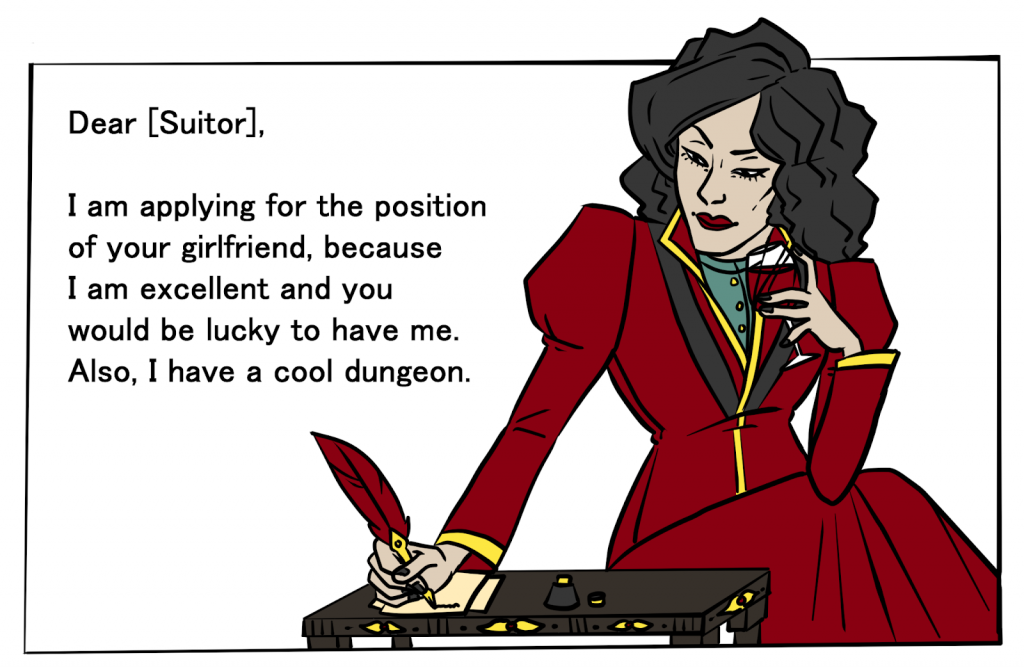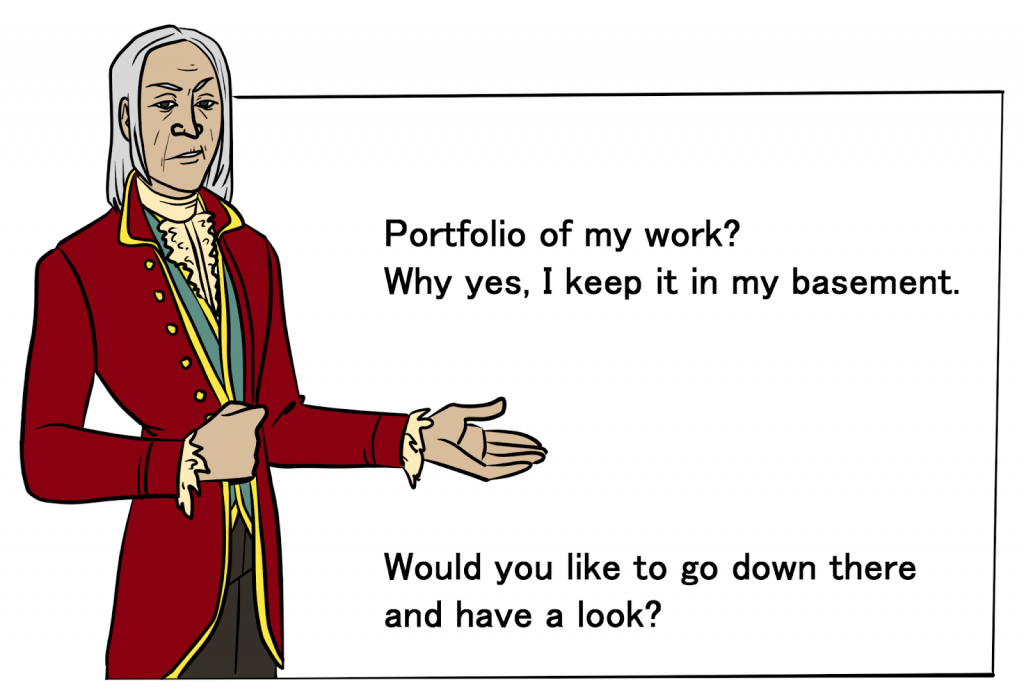So, you have decided to apply for a job here at Frictional Games? Great, we would love to hear from you!
…But before you hit that “send” button, you want to make sure that you are showing yourself and your talent in the best light possible. We have already written a blog post on how the recruitment process works, so you can mentally prepare for that.
In this blog we will help you construct a good application, consisting of a CV, a cover letter and the portfolio, and even get down the nitty-gritty of the email. While we hope you apply for our positions, you are obviously welcome to use the tips when applying for other jobs too.
Just remember the most important thing: Always customise your application for the position you’re applying to.
A job application is like a love letter. You have to show interest in the recipient, and tell them why the two of you could be a good match specifically. You can write a letter about how great you are and send the same version to different recipients, but be warned – that’s pretty transparent, and will not likely land you a (business) relationship, no matter how good you are.
In this economic situation it might be tempting to say fuck it and cast a net as wide as possible (yes, we have moved on to fishing metaphors now). But the best fish will slip through the loose holes of a haphazardly set net. Instead, try finding one good spot and throwing in a hook with a juicy bait – the juicy bait being your best application. If you are good enough, a fish will definitely bite, and a love letter recipient will definitely swoon.
Frictional is a small company with little turnover. We’re not looking to burn through talent, but to find the right applicants who will stay with us for a long time. That’s why we want the applicants to be interested in and motivated to work with us specifically.
Do you love us? We love you too! Now let’s go write that application!
1. Read the job posting
This might sound obvious, but start by reading the job posting. Then read it again.

If you’re exactly what the posting is looking for, then great. You can use your previous work as examples of why you’re a good match. Are you a generalist? Pick your strong points that you would use in this job.
Feel like you don’t quite fit the criteria? Do not despair. Especially women tend to not apply for jobs they don’t feel 100% qualified for. Think about your best qualities. Think about the hobby projects that you’ve done. Those count too.
(But be realistic about it. If your skillset is wildly different from what the job would be, you might want to wait for another opening. Otherwise you are mostly wasting your own time.)
Now compare your skills to the job’s requirements and get ready to use those points in the next steps.
2. CV
The CV is all about you, dearest. It’s your dating profile where you can show your best angles, or that really big fish you caught once.
When the perfect job comes along, you don’t want to spend hours digging out when exactly you interned at that one place. Keep a meta-CV of all your experience, skills and achievements. This can be a document, or it can be a website or LinkedIn page you can link in the CV. An accessible online CV especially good if you have gaps in your relevant experience because you were helping out at your cousin’s ice cream business or similar.
Remember the previous step where we looked at the job requirements? You can now cherrypick the most relevant points from your meta-CV and put them in your tailored CV. Quality over quantity and all that. Start from the most recent relevant one.

A good CV is 1–2 pages long. If you only picked the most relevant experience, you should be able to keep it tight. But do write in detail about the relevant experience. If you only gloss over your experience in big strokes, the employer will not be able to tell what you have actually done and achieved. Share specific tasks and examples, list your best achievements.
If you have skills outside your field, such as multiple languages or software, you can list those too. Just keep them tight. But, despite being your so-called dating profile, listing hobbies might not be very relevant. But if you’ve done game jams or similar, go ahead! They are relevant and they count.
Do:
- Keep a meta-CV.
- Always customise your CV based on the position.
- Start with the latest relevant experience.
- Write in detail about your relevant experience.
Don’t:
- Send the same CV to every position.
- List every job you’ve ever held.
- Start your CV with the first job you ever had.
- Start with education instead of work experience (unless you’re a recent graduate).
3. Cover Letter
If the CV was your dating profile, the cover letter is your love letter. And a love letter cannot just be a glorified dating profile.
Picking relevant experience for the CV already shows that you put thought into your application. But the cover letter gives you an opportunity to show that you truly care about the company, their games and the position – or at least have knowledge about them. It’s incredibly easy to spot if someone sends the same cover letter to everyone, because they only talk about themselves. You can reuse lines you’ve written for similar positions, but make sure to keep them relevant.
The cover letter is also a great opportunity to talk more about why the skills you have acquired would translate well into the position advertised – especially if your experience is moreso from hobby projects. Convince the company why you would be a good match for them.

It’s easy to get lost in profound expressions of love, but a good cover letter is half a page to 1 page long. Being concise is also a skill.
If the job posting mentions expected salary, this is a good place to mention it.
Do:
- Talk about why you want to work with this company specifically.
- Talk about your skills in relation to the job’s requirements.
- Tell the company why they should hire you. Be bold.
Don’t:
- Send the same cover letter to every company. It’s easy to spot.
- Only change the name of the company in the letter. Generic wording is also easy to spot.
- Only talk about yourself with no relevance to the company or the position.
4. Portfolio
For better or worse, looks are important. In this case your dating profile pictures are your portfolio. The portfolio is a way to back up the claim that you’re as good as you say you are, for both artists, programmers and other folks.
While a good portfolio looks different depending on whether you’re an artist, a designer or perhaps a communications person, there are still good general practices when it comes to putting one together. In this segment we will use artists as an example, but you can use your imagination to apply the tips to other fields.
Just like with a CV, keep a master portfolio. For artists it can be sites like Artstation or Behance, or perhaps your own site. Pick the pieces you are most proud of, but are varied enough to show off your versatility.
From the master portfolio, you should again pick the pieces most relevant to the position and create a tailored portfolio. If the company is looking for a props and environment artist, those are the things you should be concentrating on. Also look at the stuff the company has previously done. Have they only done high-poly? Their next product will probably not be low-poly.
There is no rule to how long the portfolio should be. The key is making it easy for the recruitment team to immediately see if you are a good or potential match. For an open position you can choose some pieces relevant to the position and put them in a PDF, or link them from the master portfolio. For an open job query, pick a few pieces that are most in line with what the company is doing.

It is also a good practice to mention what you actually did for your works. Here at Frictional we wear all of the hats. The artists do everything from whiteboxing to textures. We need to know if you know how to do those and didn’t just make others’ textures and assets look good.
Do:
- Keep a master portfolio of all your work.
- Send a portfolio or links to a few relevant pieces.
- Mention what you worked on for the pieces.
Don’t:
- Send the same top picks to every company and every position.
- Send all the portfolio pieces as separate files (links are ok).
5. Email
Chances are, there are also other jobs you have or will apply for. It’s good practice to have a professional email account for official business. Something with a neutral email handle and your real name as the sender. It makes it easier to find your application later. Having a signature with your contact information and links to your master CV and portfolio is also handy.
Some email platforms will show your profile picture, so make sure you at least know what it is. You might want to think twice before using a topless beach pic or a dank meme. The recruiter will probably have a chuckle, but might not be left with the best impression.

Make sure you include some sort of cover text in the email. It can be pretty generic, informing of your interest in the position and the attachments you have provided. This is also a good place to mention your master CV and master portfolio. Even better if you get a short elevator pitch in.
Do:
- Use your real name in the email.
- Have a signature with contact info and links.
- Write a short cover text, like an elevator pitch for your application.
Don’t:
- Have a shirtless profile picture. No, seriously.
6. Personal Information
Getting a feel of a person is important, but not all information you provide will help us with that. There are some things the employer is not even allowed to ask (family relations, religion…), and being upfront about them puts the potential employer in an uncomfortable position. Emphasis on the potential part. If you get hired, we will ask you for the details we need.
What a potential employer DOES need to know:
- Real name
- Email address
- Country of residence
- Links to your master portfolio and CV
- Phone number (we don’t need it but most companies do)
What a potential employer DOES NOT need to know:
- ID number
- Birthday
- Home address
- Marital status and/or children
- Ethnicity or nationality, gender, religion. disabilities or similar
7. Think of the recruiter
The recruitment team might get hundreds of applications every day. Sometimes the recruitment team is just one human being, who also does other things.
Just like with life in general, the key word is empathy. So send the kind of application that you would like to receive.

Make sure the application easy to go through, and that the attachments are easily accessible and in proper file formats. Be sure the relevant links are easy to find, and that they work. If you want to make a recruiter happy, include your own name in the attachment names (so it doesn’t become CV(69).pdf on the recruiter’s computer).
Do:
- Save your CV, cover letter and any other files in PDF format
- Make everything easy to find
Don’t:
- Save your text files as doc/x, rtf or txt, or especially png or jpg.
- Send your portfolio pieces as multiple separate files.
8. Afterword
There is no sure-fire way to make the perfect application. But the more tailored your application is, the better your chances are.
And lastly: even in an application, feel free to let your personality show. If the company doesn’t like your genuine application, you wouldn’t be happy working with them anyway. If they do… they will remember you.
Good luck!
